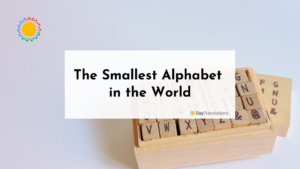Updated 2022
When we ask ourselves ‘what languages are spoken in Brazil’ we may not be considering the journey this country has been through to claim an official language. Indeed, the history of the Brazilian language, Brazilian Portuguese, and indigenous languages is quite rich and unknown by many.
Even before the arrival of Pedro Alvares Cabral, there’s a long storyline of indigenous languages spoken in those territories before Brazil’s colonization. According to the records, when Brazil was discovered by the Portuguese, different tribes of natives had multiple communication styles and tongues.
But when they’re not speaking Portuguese, what language do Brazilians speak? Perhaps surprisingly (to those unfamiliar with Brazilian history), German is the second most spoken language in Brazil. Italian comes in as the third most spoken language in Brazil.
This article will take you through a series of curious facts regarding the history of the land we know today as Brazil, focusing on the evolution of the many dialects that once existed there and the effects of its development in the country’s main language today.
The Official Language of Brazil
Brazil’s primary language is Portuguese, and it’s spoken by 98% of the country’s population. It’s the language used in government, educational sector, the arts, and almost every element of daily life.
While the country is home to various minority languages, they’ve recognized it at the municipal level instead of at a national level.
While many English tourists assume their native language can be used anywhere in the world, English won’t actually get you very far in Brazil. It’s not a language that’s widely spoken in the country. In fact, the British Council reports that a mere 5% of the Brazilian population speaks English fluently.
Interestingly, Brazil is the only Latin American country that has Portuguese listed as its official language. The majority of other Latin American countries are predominantly Spanish speaking.
The History of Brazilian Portuguese
Just like the Spanish Empire, the Portuguese Empire was in the middle of an extensive colonization process of military, economic and cultural expansion. Pedro Alvarez Cabral, a Portuguese nobleman and military commander, led his fleet to the shores of this land rich in natural resources where Portugal saw immense potential.
After territorial disputes with the French and Spanish military forces, the borders of modern Brazil were settled in 1777. This is when the first wave of Portuguese-speaking immigrants arrived. And this was the dawn of European Portuguese in Brazil.
During this initial period, Portuguese coexisted with Língua Geral. This was dialect based on Amerindian languages used by Jesuit missionaries.
It was used along with several other African indigenous languages commonly used by the slaves that were brought to the colony between the XVI and the XIX century.
As far as official history reveals, Brazilian Portuguese was not yet affirmed as the national language of the Brazilian territory until the XVIII century. Why then? And what happened in the middle?
When the “Capitanias” were institutionalized as the official administrative division of the large territory discovered, the Portuguese that spoke European Portuguese began to learn the dialects used by the “Tupi” and “Guarani” indigenous tribes and a common language was created, that derived from Tupinambá.
In 1595 Father José de Anchieta registered that this was the most spoken language in the territory, and it is considered the first influence of the present-day language of Brazil.
Exploring What Languages are Spoken in Brazil
Now, this is interesting because it means that the indigenous languages spoken by the first European Portuguese families living in Latin American countries and settlements like Sao Paulo, Bahia, and Pernambuco, was an Indigenous language.
Only later on, the children of these families would learn how to speak the widely spoken language of Portuguese at school.
It was on August 17 of 1758 when the Marques de Pombal signed an act stipulating Portuguese as the official language of Brazil. But, by the time this decree had been signed, the Brazilian Portuguese had already incorporated many Indian and African words: names of plants, fruits, and animals, among other terms. It quickly became the most widely spoken language in the country.
Another event of historical significance for the language was the Brazilian independence in 1822, after which many Germans and Italians immigrated to the country, near the areas of Santa Catarina and Rio Grande do Sul.
The exposure to these other indigenous languages is one of the main factors that explain the regionalism of spoken languages found in Brazil today.
Even though the primary language taught in Brazilian schools was based on the standard Portuguese by law, the spoken language of Brazilian Portuguese wasn’t subject to any particular constraint. Consequently, Brazilian Portuguese sounds different.
And an interesting cultural aspect is that when in doubt of pronunciation technicalities, Brazilians have historically appealed to the national standard instead of the European one, which granted them wide linguistic autonomy of spoken languages.
So, What Languages are Spoken in Brazil?
Portuguese is the official language of Brazil. Although it’s collectively known as Brazilian Portuguese. And why is that? Because of the many diverse minority spoken languages and inputs that the Portuguese language has experienced across this vast country.
To get familiar with the specific characteristics this language has, it’s important to know the reach of those inputs and influences over the local tongue. This would get us closer to understanding the context of regional varieties that differ from each other in vowel pronunciation and speech intonation.
First, we have the indigenous influence which actually contributed to creating idiomatic expressions that are used today. Also, there were African dialects, like the Quimbundo, spoken in Angola.
“Bantu” and “Yoruba” groups left quite a legacy in several cultural elements like samba and bossa-nova, even in the Afro-Brazilian culinary field. Then, the critical intake of immigrants caused the incorporation and following adaptation of words that turned into separated dialects.
Some examples are the German Hunsrückisch dialect, that we can find in the south of Brazil and Riograndenser Hunsrückisch (another Greman dialect that has official status in Antonio Carlos and Santa Maria do Herval). Other European languages, such as Ukrainian and Polish are spoken in the State of Paraná.
We would also find other ethnic groups in Libredade (center for Japanese immigrants), and Bixiga (Italian immigrants).
Spanish is largely understood, though not by all Brazilians, mainly because of the analogies in the phonology of both tongues. This is also true in many other Latin American countries.
Actually, in border-areas of Brazil with Spanish-speaking countries, a language known as Portuñol is sometimes used, which is a rough mixture of Spanish and Portuguese. The popularity of the Spanish language has increased in the last several years.
Did You Know?
Thanks to the rising popularity of Brazilian music and soap operas around the world (which started in the last decades of the XX century) the cultural influence of the Brazilian Portuguese has increased in a considerable way.
And, as an economic partner, Brazil has become one of the BRICS states, emerging economies that gained a position of political strength and commercial influence in their respective regions.
This had repercussions in the increasing rate of study of Portuguese as a foreign language in many academic disciplines, especially in the case of Brazil´s main Spanish-speaking partners.
Considering what we´ve mentioned so far, it´s easy to imagine how Portuguese is a language that allows its speakers to understand 85% Spanish, 45% Italian and 15% of the French languages.
There’s no simple answer to the question of what language is spoken in Brazil. Because in truth, there are many.
Today, Brazilian Portuguese is spoken by almost 200 million inhabitants and also by the 2 million Brazilians who have emigrated to foreign countries.
The population of Brazil speaks (and signs) around 228 different languages, 217 of them have indigenous origins whereas 11 were brought up by immigrants.
Top Three Languages Spoken in Brazil
Aside from Portuguese, a range of European languages are spoken in Brazil. There are also hundreds of indigenous tongues spoken in this area of the world. Here’s a look at the three most spoken languages in Brazil:
Brazilian Portuguese
Brazilian Portuguese has evolved a lot from its humble European origins. In Brazil, it has a distinct accent as well as grammatical and orthographic differences. The Portuguese used in Brazil was largely influenced by the range of indigenous languages in the country as well as settlers that arrived from other European countries.
Although there are differences between Brazilian Portuguese and European Portuguese, speakers from Portugal can easily converse in Brazil, and the same rings true for Brazilians traveling to Portugal. The differences between the two variants of the language can be likened to the differences between US and UK English.
German
Did you even consider German when you wondered what language is spoken in Brazil? Probably not. And you’re not alone in that idea. Many people assume that the second most spoken language in Brazil would be something like Spanish or Italian. After all, Spanish is extensively used across the rest of Latin America, and there are more Italian immigrants in Brazil than there are Germans.
However, German is Brazil’s second most spoken language after Portuguese. It’s spoken by around 1.9% of the population, and just like the local Portuguese, Brazilian German differs from European German. In fact, there’s a much more significant different in the German dialects that there is in the Portuguese dialects. The majority of Brazilian German speakers reside within the capitals of Rio de Janeiro and Rio Grande do Sul. It’s also here where Hunsrik, a German dialect descended from the Hunsrűckisch dialect of West Central Germany, is recognized as a co-official regional language.
Italian
Brazilian Italian is the third most spoken language in Brazil. Again, the version spoken in Brazil varies quite a lot from the one used in Europe. In fact, in Brazil, Italian even has its own name: Talian. It’s sometimes also referred to as Brazilian Venetian and is mostly spoken in Rio de Janeiro as a co-official language in many municipalities.
Minority Languages Spoken in Brazil
It’s not uncommon to hear Spanish, French, Japanese, Dutch, Vlax, Romani, Chinese, Korean, Polish, and Ukrainian being spoken on the streets of Brazil. Here’s a look at what the most popular minority languages in Brazil are.
Spanish
Is Brazil a Spanish speaking country? No, but Brazilians DO speak Spanish! Around 460,000 of them, to be more specific. Brazilian Portuguese and Spanish are similar in many ways, which is why many Brazilians are able to understand Spanish even though they might not speak it fluently. The majority of Spanish speakers reside close the Brazil’s borders with other Latin American countries. You’ll also find Spanish speaking clusters of communities in Rio de Janeiro and Sao Paulo, areas where learning Spanish is mandatory.
Japanese
Japanese definitely isn’t the first language that comes to mind when wondering what languages are spoken in Brazil. But Brazil is home to a large community of Japanese expats. In fact, it’s home to the world’s largest Japanese expat population, most of them calling Sao Paulo home. There are roughly 1.5 million Japanese natives in Brazil, with many of the second and third generation immigrants having adopted Portuguese as their mother tongue.
French
Brazil is home to around 30,000 French people that live mostly in and around Rio de Janeiro and Sao Paulo. Due to this, French is a widely spoken minority language in Brazil.
Languages to Understand for Visiting Brazil
If you plan on taking a trip to Brazil and don’t want to feel lost in translation, it’s important to have a basic understanding of the most widely spoken languages. If you’re a native English speaker, your mother tongue alone probably won’t get you that far. The best bet is to have a basic understanding of Portuguese since this is the official language of Brazil.
The good news (if you don’t know a thing about it) is that Portuguese is one of the easiest languages for English speakers to pick up on. If you really focus your attention, you should have no issues with mastering the basics of Portuguese before you head off to Brazil for your travels.
Wrapping Up
What languages are spoken in Brazil? Many! From Portuguese as the national language to a plethora of minority tongues. Plus, with a huge variety of indigenous languages, Brazil is home to rich linguistic diversity!
If you are looking for specialized and reliable Portuguese translation services, we can help you get what you need from this interesting language!












Sorry, the comment form is closed at this time.